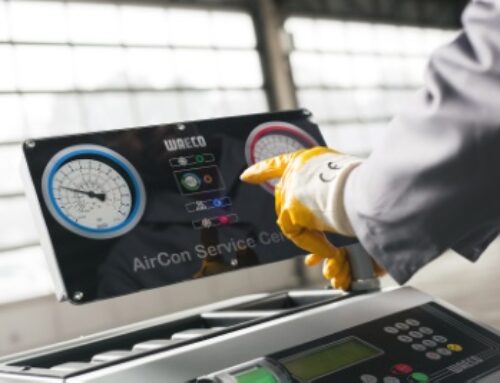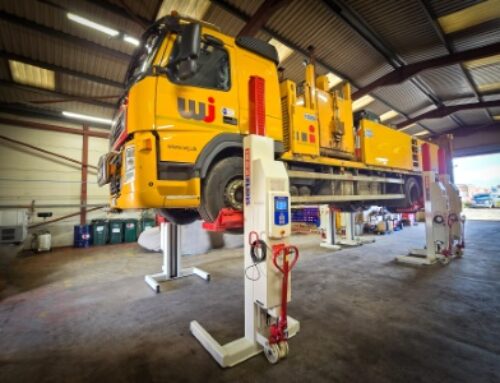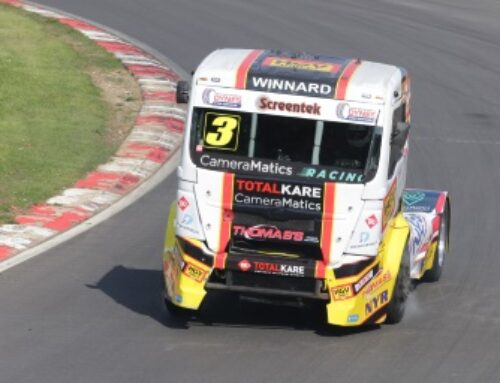Smart tachograph: from compliance to comfort?
 Dr Nigel Kirkwood, managing director of Tachograph Analysis Consultants Ltd (TACL), assesses the changing landscape of tacho technology
Dr Nigel Kirkwood, managing director of Tachograph Analysis Consultants Ltd (TACL), assesses the changing landscape of tacho technology
Tachograph-like instruments have been around for over a century. Their provenance can be traced back to the Jones Recorder of 1911. This device used the motion of the vehicle to swing a pendulum. Record the swings of the pendulum on a chart and, hey presto – driving and non-driving time is recorded.
Wind the clock forward 100 years or so, and the Jones Recorder is now the second-generation digital tachograph (SGDT).
SGDTs, or smart tachographs, as they are more commonly known, have been mandatory on new vehicles since June 2019. So, what has happened over the last century of development, and what makes the SGDT so different from their earlier counterparts?
Tachographs, at their heart, are enforcement tools – promoting road safety and facilitating compliance checking. In the past, on occasion, the transport industry has perhaps seen them as a necessary burden, and an overhead to be put up with rather than embraced.
However, things have changed from both the operator and enforcement points of view.
 Operators can now get (it is accepted, at a cost) operational information from the tachograph instrument in something approaching real time. With an interface to intelligent transport systems, such information can transform the traffic office, enabling planners to make decisions based on up-to-date information.
Operators can now get (it is accepted, at a cost) operational information from the tachograph instrument in something approaching real time. With an interface to intelligent transport systems, such information can transform the traffic office, enabling planners to make decisions based on up-to-date information.
Drivers no longer need be disturbed with phone calls asking how much driving time they have left: a win-win.
From an enforcement viewpoint, it is a double-edged sword. More enforcement improves compliance and promotes road safety. However, every enforcement roadside check has the potential to cause delayed loads and missed delivery slots – something enforcement is mindful of.
One of the priorities of Richard Turfitt, the senior traffic commissioner, and his colleagues is to promote fair competition and ensure the operation of goods and public service vehicles is safe.
Targeted and intelligence-lead enforcement helps achive this whilst minimising disruption to law-abiding operators; and there are also features built into the SGDT that support enforcement whilst minimising operator disruption.
With the SGDT, enforcement officers are able to download specific details from a vehicle as it drives past. The downloaded details are enough to warn of the possibility of an infringement(s).
If the encounter finds nothing to report, the details are deleted and the vehicle continues on its way, free from a roadside stop that may have had implications for a timed delivery. If not, the operator can be contacted and the appropriate action taken.
There has been much development and innovation over the last century in the area of tachographs. Many features have been added that improve security, integrity and functionality.
 TACL believes such innovation in transport is to be celebrated, and to this end recently sponsored the Supply Chain Innovation Award at the Chartered Institute of Logistics & Transport’s (CILT) Annual Awards for Excellence. The award was presented by Princess Anne (pictured) at a dedicated ceremony in London last month.
TACL believes such innovation in transport is to be celebrated, and to this end recently sponsored the Supply Chain Innovation Award at the Chartered Institute of Logistics & Transport’s (CILT) Annual Awards for Excellence. The award was presented by Princess Anne (pictured) at a dedicated ceremony in London last month.
As the development of the tachograph continues apace, its enforcement and operational capabilities will become ever more integrated, not only in terms of the instrument itself, but also within the overall transport infrastructure.
While road safety enforcement will always be its primary focus, operators and drivers are already embracing the latest tachograph technology and the benefits its integration can bring. Perhaps, as an industry, we are finally getting to the point at which we are comfortable with this compliance technology.
Above image, from left to right: Her Royal Highness The Princess Royal, patron, CILT(UK); Nigel Kirkwood, technical director, TACL; Paul Sainthouse, president, CILT(UK); Darren Chaisty, head of logistics operations, Rolls Royce and Jon Edwards, supply chain development director, CEVA Logistics











